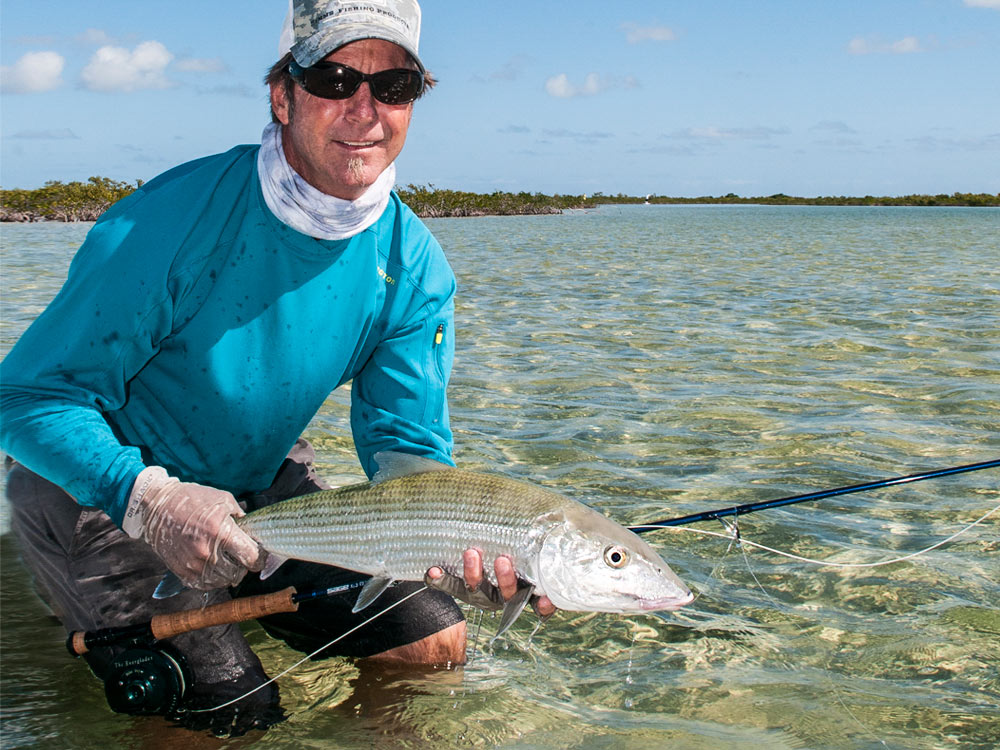
Bonefish is one of the most iconic inshore species, and for good reason. Aside from living in beautiful locations, bones offer a good evaluation of the angler’s competence, and they repay sight-fishing efforts with blistering runs and the beautiful melody of screaming drags.
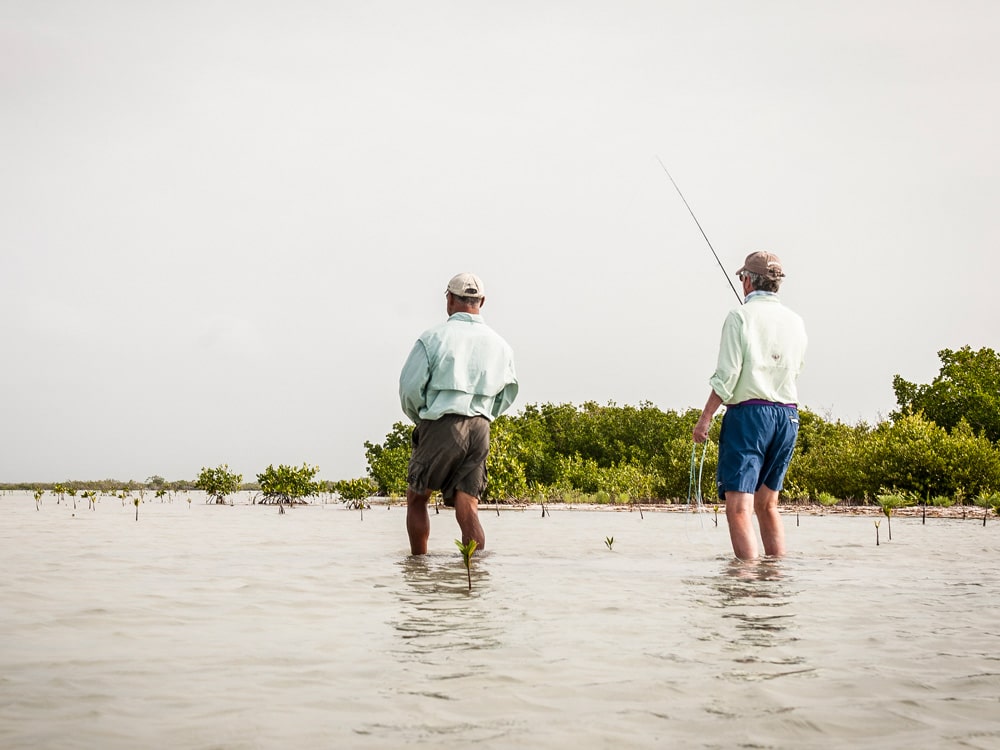
Poling a skiff across a flat and finding big bonefish cruising in skinny water tests the skills and nerves of anyone standing on the bow, rod in hand. And both the excitement and the degree of difficult increase exponentially when it’s an angler on foot that’s faced with that same challenge. Considerably tougher than targeting bonefish from a boat, wade-fishing for the fabled grey ghost offers those successful the pride that comes with spotting, feeding, hooking and landing such a demanding quarry unassisted, despite the limitations that come from going at it on foot. Below are a few tips and things to consider the next time you walk out on a flat in search of tailing or cruising bones.
First of all, stealth is paramount when stalking bonefish in shallow water. And while fishing from a boat certainly has its advantages, wading is a much stealthier approach. Not only do you minimize noise, you also cast a markedly smaller shadow than if you were standing on the deck of a skiff. Still, when bones are spotted in close proximity, waders need to be mindful of shadows created during their cast. This is a good reason to minimize false casting, which, if excessive, increases the likelihood that your target will detect movement, sense a threat, and scurry off the flat in a panic.
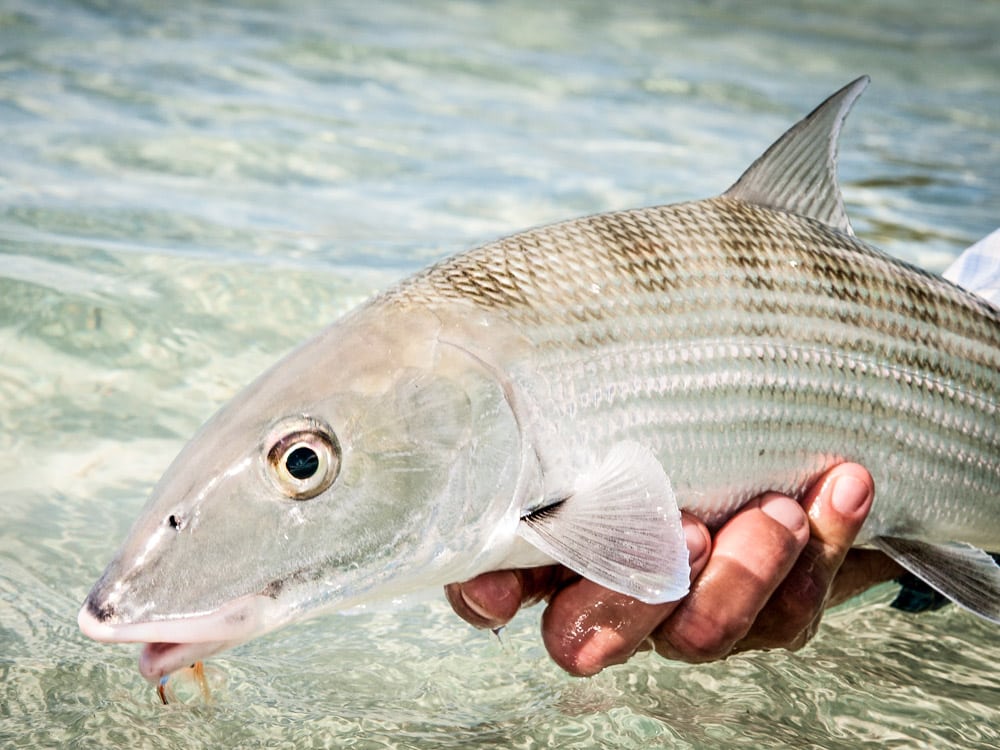
Walking clumsily about a flat is another sure way to spook bonefish. It may sound obvious, but far too many anglers lose focus and unwittingly committ this blunder. Wading anglers shouldn’t take their feet out of the water. The best practice is to slowly shuffle your feet. Though basic enough, spotting a tailing fish often sends anglers into high gear, and in their hurry to get within casting range, they forget Rule # 1 of bonefishing: stealth. Keeping your composure is hard when a tall tail keeps waving at you, but it’s imperative to be disciplined. Wading with a little purpose is OK, but approaching slowly, in an intercepting angle, is way more effective than rushing to close the gap between yourself and the fish. The more measured approach gives you the time to study the fish’s behavior, confirm its direction of travel, and pick the optimal path for an intercept and a high-percentage delivery.
Once you have made a good presentation, crouch down with the tip of your rod in the water in preparation for feeding the fish. Crouching minimizes your shadow and profile, and dipping the rod tip eliminates slack on the line as you strip the fly and ensures a more direct connection, increasing the chance of a solid hook-set.
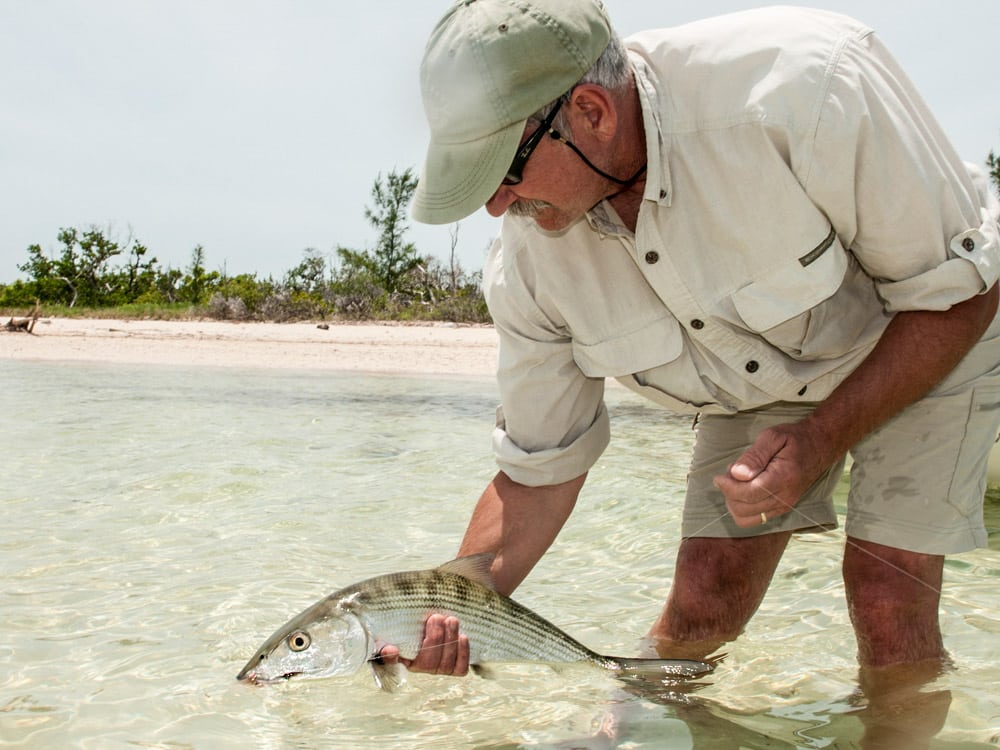
Just like on the deck of a boat, fly line management comes into play while wading a bonefish flat. If left unattended, the line will trail behind as you walk forward, creating drag and inherently forcing you to make extra false casts just to load the fly rod before making your delivery. There are several tactics to avoid the headaches that come from dragging the fly line. You can use a stripping basket, which keeps the line at the ready without the risk of dragging or snagging. But they can be a bit cumbersome, and are not for everybody.
Another option, a personal favorite, is to make a cast, then strip in the line, making manageable loops that you can hold in your non-casting hand as you wade. When you spot a fish, you let the line loops drop at your side and start your cast. Keep in mind, this can create tangles, if the loops you carry are too small or your fly line hasn’t been cleaned and dressed in a while. The simple solution is to carry larger loops and clean your line before you get on the water and again at mid-day.
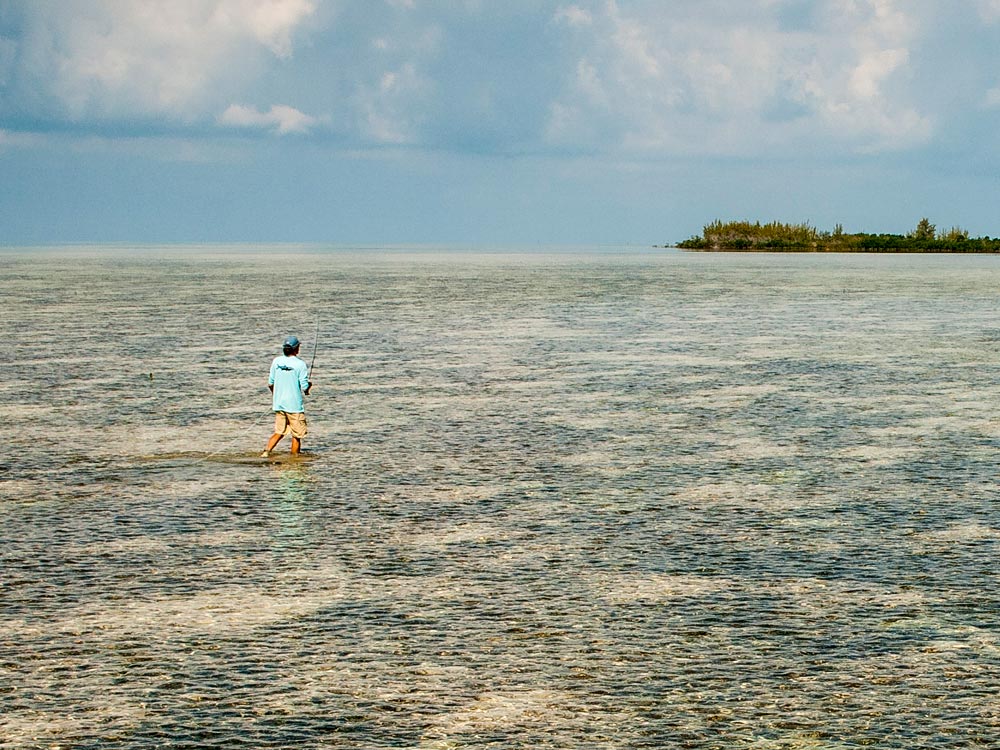
Another thing to remember is that, because wading you can sneak up on fish with greater ease, most of your presentations will be at close range, so you better dial in your short game. And since you won’t be making 80-foot casts, there’s no point in carrying a lot of line out as you look for fish. Instead, limit the length of line you carry in coils to 30 or 35 feet, and have the leader and some 15 feet of line outside the rod tip. More line means a higher likelihood of snags or tangles, besides, you can always pull more line out of the reel during the cast, if necessary.
As far as casting goes, roll-casting is a great way to make short presentations when there’s no room for the backcast, but anglers on foot rarely lack the luxury of wide-open spaces to cast. Besides, roll-casting is a pretty noisy way to present your fly to wary bonefish at close range. Instead, anglers should familiarize themselves with the steeple cast, which utilizes a high-angle backcast to load the rod. Instead of coming straight back for the backcast, you just stop the rod sooner, so the tip points higher and shoots the line up and over any obstructions behind. On the forward cast, you should stop the rod at about eye level, though different situations often call for slight adjustments. Practice making shots to targets with an obstruction behind you until you master this casting technique, so you’ll have it in your bag of tricks when needed.
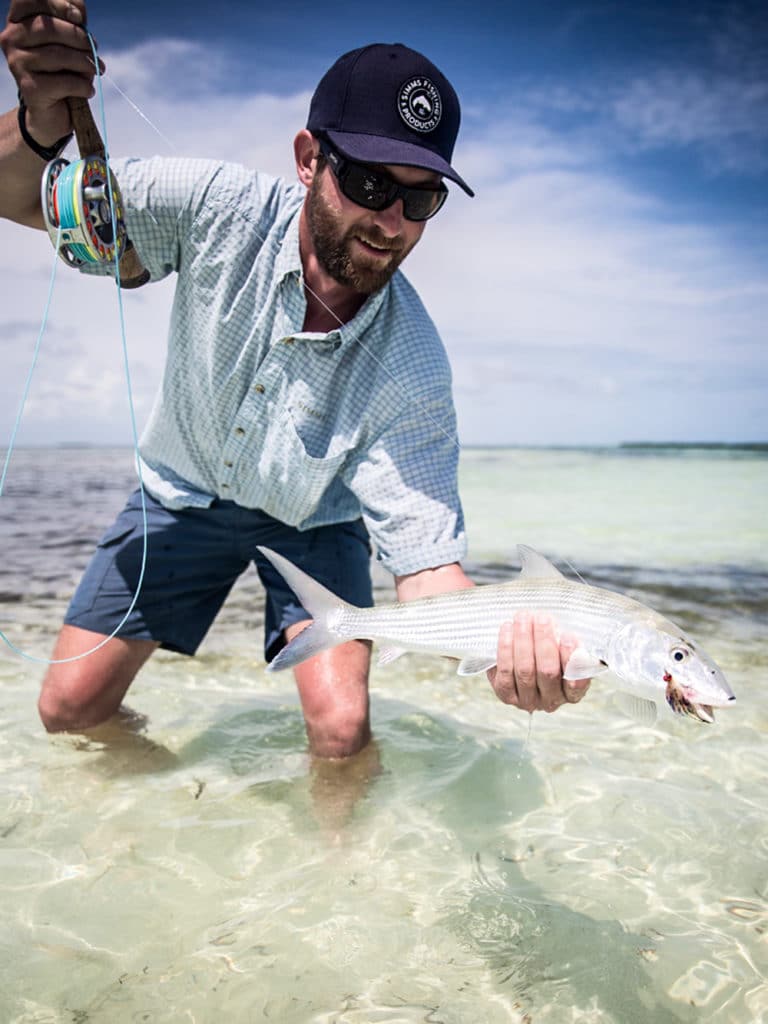
Once you make your shot, wait. Often times, the subtle sound of the fly landing will draw enough attention to entice the fish in for a closer look. If you’re satisfied with the presentation, and you deem your fly is in the ideal spot, it’s time to sell it. Put the tip of your rod in the water, take up any slack with a long, slow strip to ensure a direct connection to the fly, and impart action to your offering, keeping an eye on the bonefish’s body language.
If you get a reaction, don’t do anything except get ready to strip-set. If you do not get a reaction, implement a slow strip to move the fly slightly and get the fish’s attention. If the fish approaches timidly, continue to strip slowly. If the bone pounces on the fly and eats, resist the urge to make a sharp strip-set. Instead, make a long, slow strip, keeping moderate tension. That’s usually enough to get a good hook-set, and if you miss, it keeps the fly in position to give the fish a second crack at it.
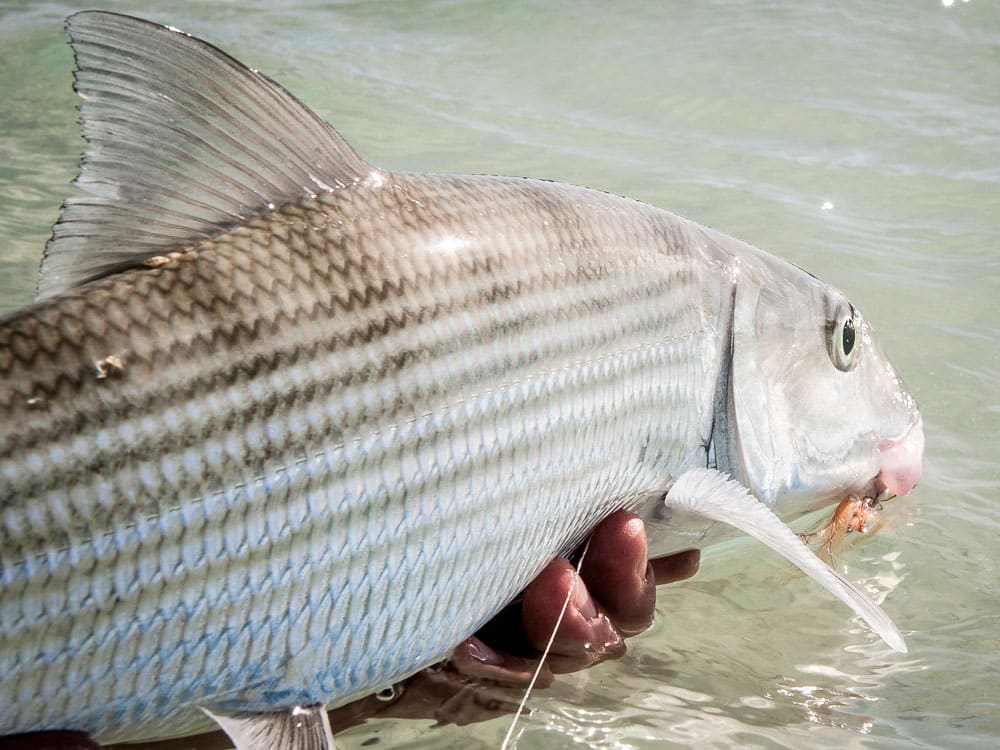
Should the fish swim toward you after the hookup, quickly dip the rod tip in the water, at an angle pointing away from the fish, to minimize slack and prevent the line from wrapping around your rod tip. When the fish swims past you, lift your rod as high as possible to keep the bone from rubbing its nose on the bottom to chafe the line and break off. Once the line has been cleared and its coming off the reel, put the screws to the fish, pulling with the rod at a low angle in a direction that would force the bone to do a back-flip. That’s how you beat a fish quickly, shortening the battle and ensuring a successful release.









